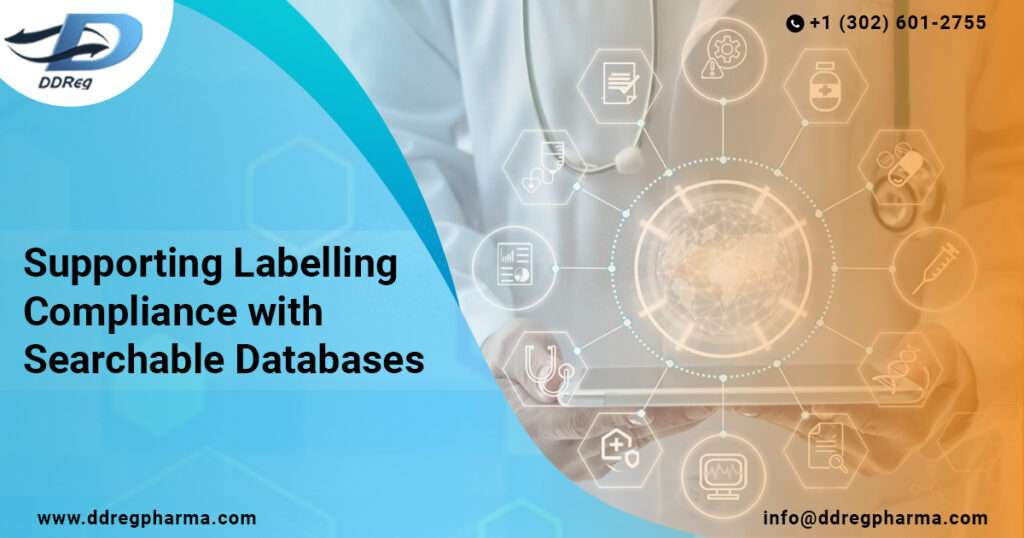Biopharmaceutical product labelling is a multifaceted undertaking that spans various products and markets, encompassing diverse formulations and dosages. The challenge lies in consistently upholding pharmaceutical labelling compliance throughout this intricate process. Ensuring pharmaceutical labelling compliance involves following regulatory requirements and guidelines when developing and updating product labels, such as Summary of Product Characteristics (SPC), Patient Information Leaflet (PIL), and Package Insert (PI).
The validation of Good Manufacturing Practice (GMP) plays a crucial role in ensuring the quality and safety of pharmaceutical and biotech products and processes. Regulatory agencies around the world adhere to GMP regulations & requirements.
It is crucial to maintain compliance in pharma labelling to ensure patient safety. Other potential consequences of non-compliance to regulations include facing regulatory fines, damage to a company’s reputation, and others that can be cost-heavy for pharmaceutical companies.
Importance of Easy Access to Updated Information
The pharmaceutical industry operates in a fast-paced environment, with new data and safety information emerging regularly. It’s crucial to have easy access to updated labelling information. This is where searchable labelling databases come into play.
A searchable labelling database is a centralized repository of labelling documents that allows users to quickly and efficiently search for the most current information. Here are some key benefits of such databases:
Timely Updates: Users can access the latest labelling information promptly, ensuring that healthcare decisions are based on the most current data.
Efficient Research: Researchers can easily retrieve labelling information for studies, clinical trials, and pharmacovigilance efforts.
Streamlined Regulatory Compliance: Regulatory bodies can expedite their review processes by accessing labelling data efficiently, facilitating the approval of new drugs and updates to existing ones.
Improved Transparency: Accessible labelling databases promote transparency within the pharmaceutical industry, enhancing trust among stakeholders.
Examples of Searchable Labelling Databases
DailyMed – A Comprehensive Labelling Tool: DailyMed, a product of the National Institutes of Health (NIH), is a treasure trove of labelling documents. With over 140,000 labelling documents readily accessible, it offers an extensive and user-friendly platform for retrieving detailed information about various products, including pharmaceuticals. DailyMed not only provides access to current labelling documents but also offers historical labelling data, making it a valuable resource for healthcare professionals, researchers, and consumers alike.
Drugs@FDA – A Hub of FDA-Approved Drug Information: For those seeking information about drugs approved for human use in the United States, Drugs@FDA is the go-to source. Maintained by the U.S. Food and Drug Administration (FDA), this database offers a comprehensive collection of FDA-approved drug labels. Users can access detailed drug information, including indications, dosage forms, and labelling changes. This resource serves as a vital reference for healthcare professionals prescribing or dispensing medications.
Medication Guides – Ensuring Informed Medication Use: Medication Guides are essential tools for communicating important information to patients about specific medications. Maintained by the Center for Drug Evaluation and Research (CDER), Medication Guides provide patients with clear and concise instructions, warnings, and precautions related to their medications. This database ensures that patients have access to the latest guidance, promoting safer and more informed medication use.
Drug Safety-Related Labelling Changes Database – Staying Updated on Safety: Safety is paramount when it comes to pharmaceuticals. The Drug Safety-Related Labelling Changes Database, maintained by the FDA, keeps users informed about recent updates to safety information in labelling. By tracking changes related to drug safety, healthcare professionals can ensure they are up-to-date with the latest precautions and recommendations, enhancing patient care and safety.
Pediatric Labelling Information Database – Focusing on Pediatric Use: Pediatric use information is vital for healthcare providers when treating children. The Pediatric Labelling Information Database, hosted by the FDA, offers a comprehensive collection of labelling documents recently updated with pediatric use information. This resource supports the safe and effective use of medications in pediatric populations, ensuring that children receive appropriate and well-documented care.
Conclusion
Biopharmaceutical product labelling is a complex process that requires strict compliance with regulatory guidelines, including GMP standards. Non-compliance can lead to serious consequences, including regulatory fines and product recalls. Access to updated labelling information is crucial, and searchable labelling databases provide efficient access for healthcare professionals, researchers, and regulatory bodies. DDReg Pharma specializes in pharmaceutical labelling compliance, emphasizing its importance for patient safety and overall industry success. Upholding pharmaceutical labelling compliance is not an option; it is a necessity for both patients and the pharmaceutical industry.
DDReg is a globally reputed regulatory and pharmacovigilance service provider. It offers a comprehensive product labelling and artwork review service for various pharmaceutical products. The dedicated labelling team handles end-to-end labelling including country-specific labelling to translation management and ensures compliance with international standards and agency requirements. The team provides comprehensive support in the development, review, and updating of SPC, PILs, CCDSs, SPLs, and artwork. To know more, email us at info@ddregpharma.com. Read our previous blog on Swissmedic’s take on Real World Evidence in Regulatory Decision Making.

